
A brightly coloured dragonfly zipping across the surface of a pond is one of the iconic images of a British summer – though in some parts of the country, an increasingly rare one. Dragonflies and their relatives, the damselflies, were amongst the first things to fly, taking to the air back in the Carboniferous Era – about 150 million years before the dinosaurs appeared! Virtually unchanged since then, they have proved themselves to be a highly successful group during the intervening 300 million years or so, but more recently life has become a little more difficult for them. Over the last fifty years, with the gradual loss of more and more of their natural wetland habitats and native wildlife, three British species have become extinct – making the haven offered by garden ponds increasingly important for many of the 39 kinds which still remain.
Jump to specific section
The Water Dragon
Although at its most conspicuous in the air on a sunny day, most of the dragonfly’s life is lived underwater, as a voraciously carnivorous nymph. In a lifespan of six or seven years in the case of some of the larger species, only around four months will be spent as a winged adult – so a good pond to call home is clearly essential!
Hatching from eggs laid directly in the water or inserted into mud or water plants, the young which emerge waste no time in finding a meal – and will continue to eat anything they can capture as they grow. The prey is grabbed in a lightning-fast lunge of a pincer-like extension of their lower jar – called the “mask” – in a scene scarily reminiscent of the “Alien” movies! Unfortunately since their varied menu can include tadpoles, small newts and fish fry, they are not always particularly popular with pond owners. However, unless they are present in large numbers, the damage they do is not so great and, in their favour, they can help to control the population of other predatory insects.
Dragonflies are unusual in that, unlike insects such as butterflies, moths and houseflies, they do not have a chrysalis or pupa stage. When the time is right, the nymphs simply climb out of the water up the stem of a plant, shed their skins, expand and dry their wings and then fly away as fully formed adults in search of food and a mate.
Darters, Hawkers and Damselflies
Dragonflies fall into two main groups – the darters and the hawkers – based on their hunting behaviour. The typical long, thin bodied dragonfly is a hawker, patrolling its patch and swooping on any likely looking prey that it comes across, while the shorter, fatter-bodied darters find themselves a good vantage point to perch on, and then dart out when food is in range. Both are superlative fliers; highly manoeuvrable and with some species having a top speed touching 30 mph, they make fearsome hunters.
Damselflies look very similar to their relatives and can often be mistaken for a less robust kind of dragonfly. However, there are a few general guides to telling them apart and once you “get your eye in”, it’s not too difficult to spot the differences. Damselflies are generally smaller and slighter in build, and while dragonflies can often been encountered some distance from water, the damselfly is a weaker flier and seldom strays far from its home pond. The eyes of a dragonfly are very prominent – usually so large that they wrap around the head and often touch – and a perching dragonfly spreads its wings out to the side. By contrast, at rest the smaller-eyed damselfly tends to hold its wings folded back along its body.
There are probably few kinds of native pond-life for which garden ponds can make quite so much of a difference as either dragonflies or damselflies. With so much of their lives spent lurking underwater, ponds are absolutely key to their survival – and having both pre-dated and outlived T.rex and his kin, they are probably due a little help now.
Rejoicing in a variety of fanciful old names, including Adder Bolt, Horse Stinger and Devil’s Darning Needle and with a rich folklore all of its own, the true life of the dragonfly is every bit as fascinating as its mythology.
Pond Dragonflies FAQ
Are dragonflies good for a pond?
Dragonflies are not only beautiful, but also beneficial for a pond. They help control insect populations by feeding on mosquitoes and other flying pests. The presence of dragonflies in a pond is also an indicator of a healthy ecosystem, as they require clean water to thrive.
Why do dragonflies hang around ponds?
Dragonflies are often found around water sources such as ponds and lakes because these areas provide them with a place to lay their eggs. Additionally, they feed on small insects and aquatic creatures that are found in and around water.
How do I get dragonflies in my pond?
To attract dragonflies to your pond, it is important to provide them with a suitable habitat. This includes plenty of cover such as dead wood for egg-laying Southern Hawkers, and sand and gravel to encourage the species that lay their eggs on bare sediment. Keeping the water clean will also help water plants to grow, providing habitat for Emperor dragonfly larvae.
Do dragonflies indicate clean water?
Yes, dragonflies are a good indicator of clean water as they require it to thrive. Spending most of their lives in aquatic environments, their presence signifies good water quality.
Do dragonfly larvae eat goldfish?
Dragonfly larvae are carnivorous predators that feed on a variety of aquatic animals, including small fish. While goldfish are not typically on their menu, dragonfly larvae may occasionally feed on small fish that are within their grasp.
What are dragonflies doing when they dip in water?
When dragonflies dip in water, they are laying eggs. Many species of dragonflies fly across the water and dip the end of their abdomens into the water to deposit eggs. The eggs then hatch into larvae, which develop in the water before emerging as adult dragonflies.
Are dragonflies friendly to humans?
Dragonflies are harmless to humans unless they are provoked, and they will not sting or bite unless they are severely provoked. Although, there are instances where people report that they received a bite from a dragonfly which can cause a small cut and redness on the skin. These insects are beneficial to humans as they are efficient predators of mosquitoes and other flying insects that are often considered pests.
What pond plants attract dragonflies?
Several aquatic plants are known to attract dragonflies, including tall stemmed emergent plants such as water iris, lythrum salicaria, butomus umbellatus, eriophorum angustifolium, pontederia, and cyperus species growing from pond plant shelves, which help larvae climb up and out of the water. These plants provide perching sites for adult dragonflies and places for the dragonfly larvae to climb out of the water when they are ready to emerge as adults. Dragonflies also require plenty of sunlight, so plant selection should be based on how well they tolerate sun exposure.
Do fish like dragonflies?
Dragonflies serve as food for many aquatic species, including fish, frogs, newts, and other larger aquatic creatures. Fish such as rainbow trout, brown trout, largemouth bass, and smallmouth bass are known to feed on dragonfly nymphs. In general, dragonflies are a calorie-packed protein meal for these aquatic predators.
What fish eat dragonflies?
Several gamefish species, including rainbow trout, brown trout, largemouth bass, and smallmouth bass, consider dragonflies to be a favourite prey item. They provide a calorie-packed protein meal for these fish, making them a prized food. These fish are known to feed on dragonflies throughout their life stages.
What do dragonflies love the most?
Dragonflies love the warmth of the sun, and flat rocks provide an ideal place for them to sun themselves. A mix of light and dark rocks is recommended to attract more dragonflies to the area. These insects also enjoy perching on plant stems near the water’s surface, where they can easily spot prey.
Do dragonflies eat mosquitoes?
Dragonflies are known to be efficient predators of mosquitoes, eating them at all stages of life. They can eat hundreds of mosquitoes each day, making them beneficial insects to have around your yard. Observing these beautiful insects in your garden can be a joy.
How long do dragonfly larvae stay in a pond?
Almost 95% of a dragonfly’s or damselfly’s life is spent in water as eggs and larvae. They spend 6 months or up to 2 years, depending on the species. Once they moult, they emerge and become adult dragonflies or damselflies.
Do dragonflies lay eggs in ponds
Yes, dragonfly larvae require water to survive, so adult females search for water habitats like ponds, streams, and swamps to lay their eggs. They lay their eggs directly into the water or close to it. When the eggs hatch, the larvae adopt a lifestyle that is different from their parents; they become aquatic and spend most of their lives in the water.
How long do dragonflies stay in water?
Although adult dragonflies are commonly seen, they actually spend most of their lives underwater in the larval stage. It takes them 5 to 7 years underwater to accumulate enough mercury in their bodies, which is what makes them good indicators of the area.
Why do dragonflies swarm around water?
Dragonflies rely on water for reproduction and almost all of their primary prey organisms, which is why standing water bodies such as lakes or ponds attract large amounts of dragonflies. These swarms may cause annoyance to homeowners but should not be seen as dangerous as dragonflies are not harmful to humans.
Last Modified: April 6, 2023
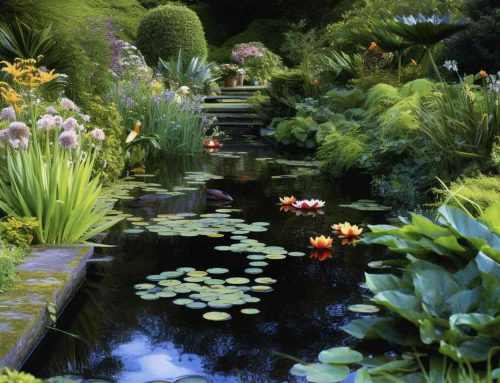
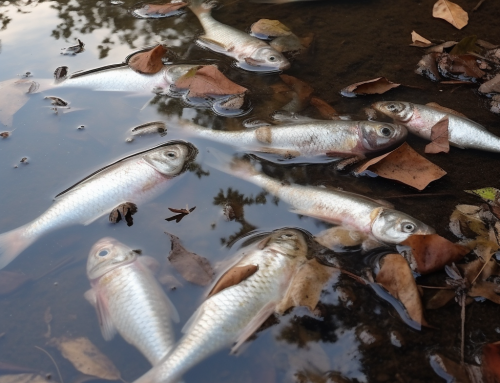
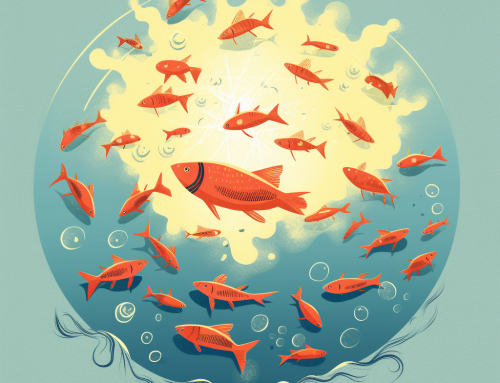
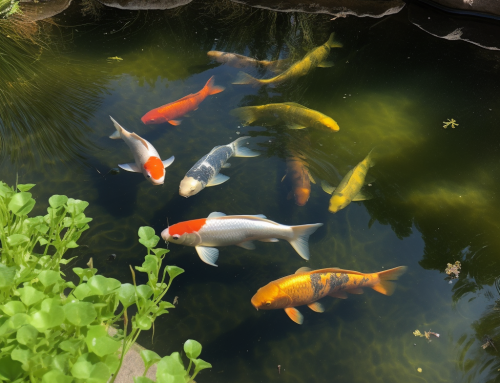


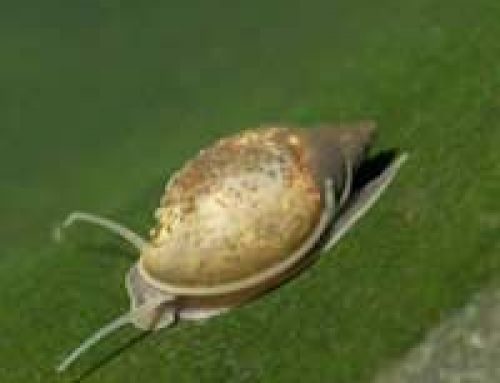

What is the name of the dragonfly (?) that has 4 wings, skinning wing length but a box shape end that measures approx. 3/8 inch square at end of each wing ? It’s brown in color with black patches over body an box wing tips.
Hi, I have dragonfly larvae in my pond but over the last couple of days I am finding dead/ empty skins floating on the top. Do they shed their skins like a snake? I can’t see water mites but doesn’t mean they are not there…can I do anything to help them stay alive? Many thanks Jess